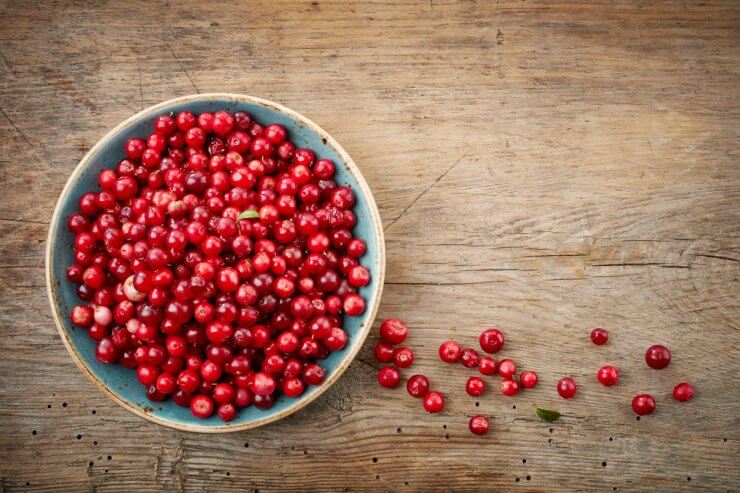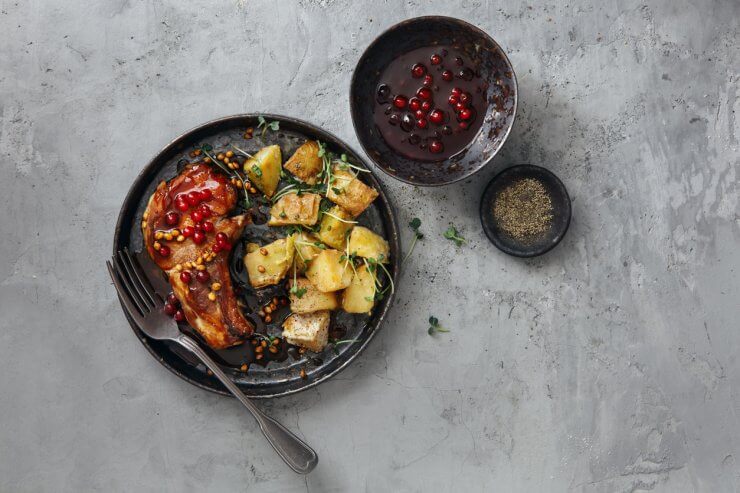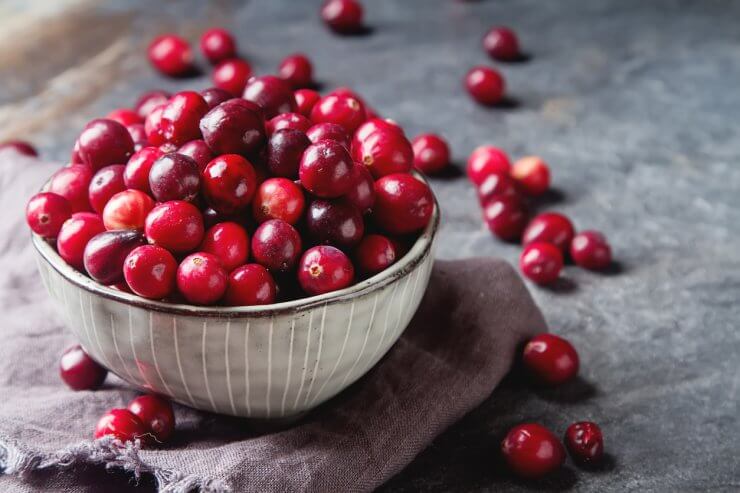
bowl of lingonberries
Whenever I hear about lingonberries, I’m teleported to the scene in Willy Wonka and the Chocolate Factory (the O.G. film with Gene Wilder) where the kids are licking wallpaper. The snozzberries taste like snozzberries! Wallpaper licking aside, for some folks like me the lingonberry is a bit more on the fringe than the more popular cranberry or blueberry. For others, lingonberries are a long-time favorite with a rich history of delicious family recipes. Either way, if you want to grow lingonberries and use them in your cooking and baking, you’ve come to the right place!
Explore the easiest fruit to grow at home—indoors or out! Read our FREEBIE 15 Easiest Fruits to Grow at Home, right now!
First things first: what the heck is a lingonberry?
Before figuring out how to grow lingonberries, it’s probably a good idea to learn more about them! At first glance, these small red berries resemble cranberries. Lingonberries are native to Scandinavia, and some areas of Europe, Alaska, Canada, and the Pacific Northwest of the U.S. For the most part, these berries are not cultivated on large farms. Instead, they are harvested in the wild (which is why they are a bit pricier than farm-grown berries). Other names for the lingonberry include alpine cranberry, foxberry, mountain cranberry, dry ground cranberry, and partridgeberry.

What do they taste like?
Did you know the original Swedish Fish candy flavor is lingonberry? Similar to cranberries, lingonberries are a bit sour when eaten fresh. They are smaller and juicier than cranberries. The flavor profile of lingonberries is bright, sour, and tart with a hint of sweetness. The sweetness develops further when the berry is cooked down with sugar or other sweeteners.

How do I grow lingonberries?
Lingonberries grow on a low-to-the-ground, acid-loving, perennial bush like their cousin the blueberry. They grow in full sun and partial shade and complement taller acid-loving highbush blueberries. They don’t do well in drought conditions and need well-drained soil. Consider amending your soil with organic matter to help it drain properly. Lingonberry roots are shallow and require regular moisture. This can lead to a weed problem if you’re not diligent.
It’s best to grow lingonberries from plants rather than seeds since they take a while to establish. Springtime is the optimal time to plant lingonberries as long as you wait until the last frost. It’s important to space lingonberry plants about 18 inches apart from each other since they will eventually connect to form a low hedge in a few years. Mulch after planting with sawdust or straw and pull weeds as they pop up. As long as they get 1 inch of water a week from rain, there’s no need to do any additional watering. Berries are ready to be harvested when they are totally red.

How can I use them?
Lingonberries make delicious jams and sauces, can be added to most pastry and baked goods, and even create a delightful complement to meat and poultry dishes. Here are three ways to add lingonberries to your recipe box.
1. Simple lingonberry jam
Ingredients
2 ¼ pounds of fresh lingonberries
⅞ cup water
1 cup of white sugar
Directions
1. Boil water and lingonberries in a pot for about 7 minutes, skimming foam off the top.
2. Stir in sugar and bring back to a boil for a few more minutes.
3. Process in your preferred canning method.
2. Blueberry coffee cake
Use lingonberries in any recipe that you’d usually use cranberries or blueberries to add a tart, sweet, flavor. I love to substitute lingonberries for blueberries in this blueberry coffee cake. Simply follow the directions and swap in fresh lingonberries instead of blueberries. If I’m being honest, this recipe is probably one of my top reasons to grow lingonberries.
3. Lingonberry Sauce (Berry meat sauce)
Ingredients
⅙ cup (8 tsp) red wine
1 tbsp corn starch
6 tbsp sugar
¾ cup of water (plus two extra tablespoons )
¼ tsp ground cinnamon
3 ¼ cup lingonberries (fresh or frozen)
Directions
1. Boil water and lingonberries in a pot. Add sugar and cinnamon. Cook for three minutes removing the foam from the top.
2. Remove from heat.
3. Using an immersion blender, mash berries to desired consistency. (You can do this in a standard blender as well, just don’t overdo it.)
4. Transfer berries back into the pot on the stove, pour in the wine, and bring to a boil. Reduce to low heat.
5. Mix cornstarch with two tablespoons of water in a separate small bowl. Pour mixture into sauce, stirring constantly until mixture starts to boil.
6. Remove from heat and serve with your favorite meat or poultry.

Health Benefits
If you grow lingonberries, you’ll not only add a sweet and sour ingredient to your recipes. You’ll also be adding great nutrition. Lingonberries are high in antioxidants like manganese, vitamin C and Vitamin E and there are several studies linking lingonberries to improved gut health, blood sugar, and heart health.
Do you already grow lingonberries? What are your tips and favorite dishes? Let me know in the comments.
Explore the easiest fruit to grow at home—indoors or out! Read our FREEBIE 15 Easiest Fruits to Grow at Home, right now!





Where do you buy lingonberries plants?
Talk to you local nursery and see if they will orders them for you. I love supporting the small, local suppliers. If that’s not an option then try an online retailer like gurneys.com.
My husband being Norweign introduced me to lingonberries…I
Love them and have wanted to plant them for years…Thank you for this article…I go forth now ready to meet the challenge. ONE QUESTION…do lingonberries do well in a container?
TY Stefeni
Lingonberries do well in containers, just keep them moist and protect them from harsh winds if you leave the containers out during the winter months.
Do lingonberries grow well in a container?